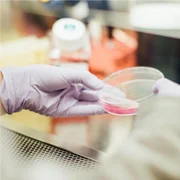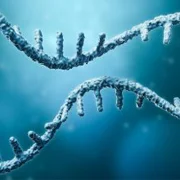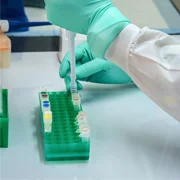Technical Support
inquiry@accegen.com
Hot Products
- In-Stock Tumor Cell Lines
- Human Orbital Fibroblasts
- Human Microglia
- Human Pulmonary Alveolar Epithelial Cells
- Human Colonic Fibroblasts
- Human Type II Alveolar Epithelial Cells
- Human Valvular Interstitial Cells
- Human Thyroid Epithelial Cells
- C57BL/6 Mouse Dermal Fibroblasts
- Human Alveolar Macrophages
- Human Dermal Fibroblasts, Adult
- Human Lung Fibroblasts, Adult
- Human Retinal Muller Cells
- Human Articular Chondrocytes
- Human Retinal Pigment Epithelial Cells
- Human Pancreatic Islets of Langerhans Cells
- Human Kidney Podocyte Cells
- Human Renal Proximal Tubule Cells
-
What is the passage limit and doubling time of Human Preadipocytes-Subcutaneous under standard culture conditions?
Human Preadipocytes-Subcutaneous can be passaged up to 4 times, with a doubling time of approximately 24-48 hours. However, the specific conditions depend on experimental procedures, cell status, and culture conditions.
-
What is the source of Human Oral Epithelial Cells?
AcceGen's Human Oral Epithelial Cells are mainly isolated from the gingival mucosa and buccal mucosa of human oral cavity.
-
What is the source of Human PB Red Blood Cells/Mature Erythrocytes?
The peripheral blood is collected by leukapheresis from fully consented IRB approved donors who are tested negative for HIV, HBV, and HCV. A common anticoagulant acid-citrate-dextrose formula A (ACD-A) is used to prevent the blood from clotting during the leukapheresis process.
-
What is the passage limit for Human Lobar Bronchial Epithelial Cells?
These cells are typically viable for 10-12 passages before cellular senescence.
-
What lymphocyte types are present in Human Spleen Cells?
Human Spleen Cells contain T cells, B cells, and NK cells. Among them, T cells and B cells are present in higher proportions, while NK cells are less abundant.
-
Do Human Ovarian Surface Epithelial Cells require gelatin coating?
These primary cells adhere poorly at the begining, so gelatin coating is recommended. In later passages, coating might be reduced or omitted.
-
What is the species information and coating concentration of collagen required for Human Microglia?
The Type I collagen provided by AcceGen is purified from rat tail tendons. The recommended coating concentration is 0.5 μg/cm².
-
What is the passage limit and doubling time for Human Corneal Keratocytes?
Human Corneal Keratocytes can be passaged 12-15 times, with a doubling time of approximately 24-36 hours. However, the specific conditions may vary depending on experimental procedures, cell status, and culture conditions.
-
How are Human Esophageal Epithelial Cells obtained?
These cells are isolated from human esophageal tissue using trypsin digestion.
-
What quality control is performed for Human Mast Cells – Dermis?
AcceGen evaluates the viability of mast cells by flow cytometry (>80%) and characterizes them using surface markers including CD117, FcεR1a, chymase, and tryptase. In addition, AcceGen tests the cells for common microbial contamination and blood-borne pathogens including HIV-1, HIV-2, Hepatitis B, and Hepatitis C.


